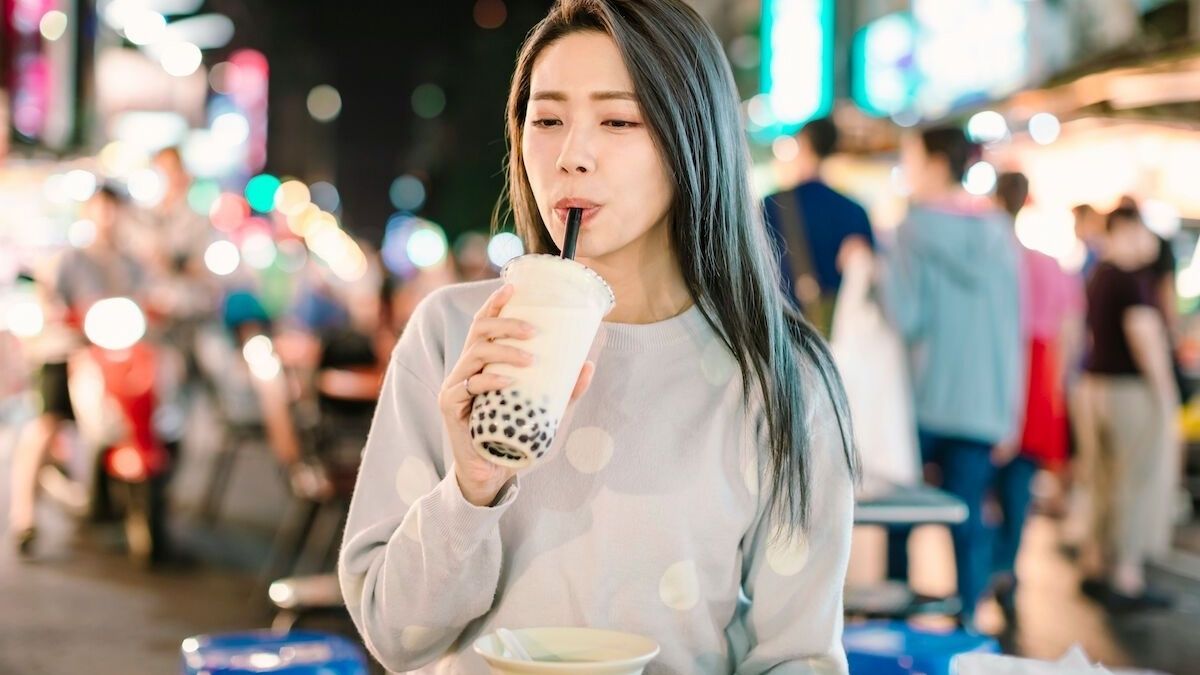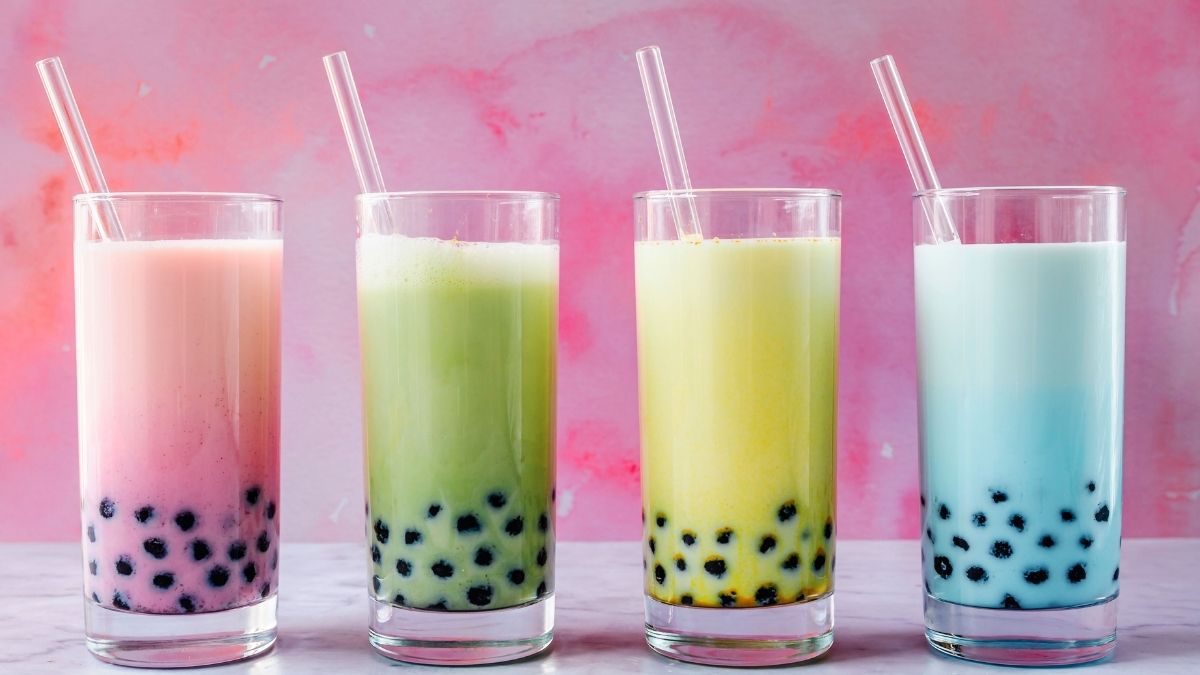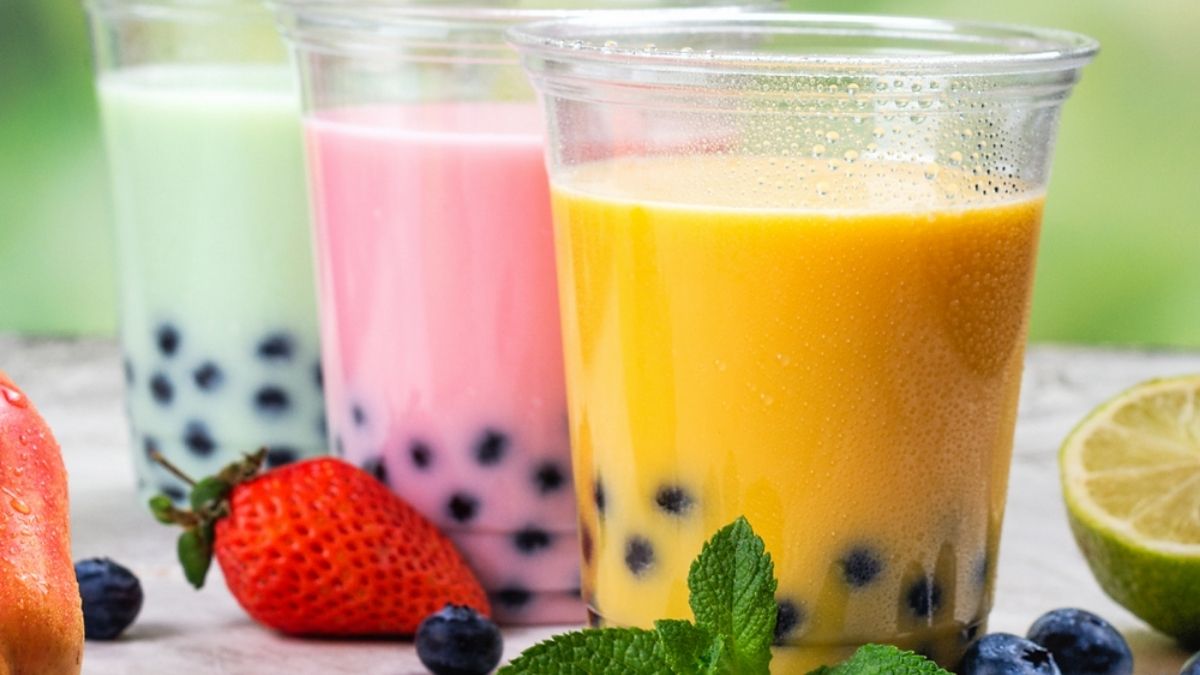Bubble tea (boba tea) is a famous Taiwanese drink with various flavors and flavors. Bubble tea cafés can offer a bewildering array of menu choices, all of which can be customized to your liking. Start with some fundamental understanding of bubble tea and the many tastes and textures, whether you’re preparing it at home or ordering it at a tea shop. Bubble tea is also known as boba. Boba can refer to the drink itself, the bubbles created during the mixing process, or the black tapioca pearls found inside the Tea.
Bubble tea was only available at bright mom-and-pop businesses in big-city Chinatowns and Koreatowns when it was first introduced to the West. While Asians and Asian Americans have been enjoying bubble tea (also known as boba) for decades, this popular Taiwanese beverage has progressively grown in popularity worldwide. Black Tea is made with milk and sugar, then poured over ice and tapioca balls in traditional bubble tea. However, it may be made in various flavors, with a base of green tea, chai tea, other loose-leaf teas, fresh fruit juice, and entertaining toppings like mochi.
What is Bubble Tea?
Bubble tea (also known as boba tea, pearl tea, and tapioca tea) originated in Taiwan in the 1980s. It is trendy in its original country and has since spread around the globe. Brew tea, milk or non-dairy milk (often skipped), taste and sweetener, and tapioca pearls or comparable boba are the four essential components of bubble tea. The drink is traditionally shaken with ice and served with a large straw.
Bubble tea is a cold, flavored tea beverage with large chewy tapioca balls, making it a delicious snack and a beverage. Bubble tea comes with a brightly colored jumbo straw that is visually appealing and useful. The tapioca pearls glide effortlessly up the large straw with each sip of bubble tea. This Taiwanese beverage is known by various names, including boba tea, pearl milk tea, boba milk tea, bubble milk tea, and simply boba.
The Many Flavors of Bubble Tea
Various Flavors of Bubble Tea
While the other ingredients (Tea, milk, and boba) constitute the base for bubble tea, the genuine flavor comes from the flavoring ingredient, such as syrup or powder. Bubble tea businesses are stocked with a wide selection of syrups and powders, similar to how coffee shops carry a line of syrup bottles to flavor lattes.
Because they mix well into cold milk tea, simple flavored syrups are the preferred flavoring option. The following are some standard fruity options:
- Honeydew
- Lychee
- Mango
- Passion Fruit
- Peach
- Plum
- Strawberry
- Avocado
- Banana
- Cantaloupe
- Coconut
- Grape
- Green Apple
- Jackfruit
- Kiwi
- Lemon
- Pineapple
- Watermelon
For a less fruity flavor, try these popular options:
- Almond
- Coffee
- Ginger
- Pudding (chocolate, custard, mango, or taro)
- Taro
- Barley
- Caramel
- Chocolate
- Lavender
- Mocha
- Rose
- Sesame
What are the Types of Bubble Tea?
Bubble tea may take on any flavor thanks to its many variations, and tea shops frequently provide hundreds of different options. The following are some typical forms of bubble tea that may be found on any tea house menu:
- Milk Tea is a delicious blend of black Tea, milk, and (optional) tapioca pearls.
- Thai Tea combines a solid black tea with sweetened condensed milk and tapioca pearls (optional).
- Puréed taro, a purple root akin to sweet potato with a toasted, sweet flavor, is used in Taro Bubble Tea.
- Fruit Tea: A caffeine-free tea made with fresh fruit and your choice of boba.
What does Bubble Tea Taste like?
The classic flavor of bubble tea combines the rich complexity of black tea with the creamy richness of milk and the sweetness of brown sugar tapioca. The drink will taste slightly different if you order yours with green, Earl Grey, jasmine, chai, or oolong teas.
You’ll discover delightful, caffeine-free fruit-flavored selections on most bubble tea menus. Try flavors like lychee, white peach, yuzu, and Yakult, popular in Asia. Sweet taro, with its wonderful purple hue and nutty vanilla flavor, is worth trying.
If you’re a slow drinker who prefers to savor their drinks, ask for less ice so the flavor of your boba doesn’t get diluted as it melts. Don’t worry if you have a texture sensitivity, and chewy foods aren’t your thing. Nowadays, you can add flavorful jellies, sweet adzuki beans, fresh fruit, ice cream, or rich custard pudding to your Tea.
Is Bubble Tea Unhealthy?
Like any other food, bubble tea is only as healthy as your ingredients. Most bubble tea establishments provide sugar levels ranging from zero to 25, 50, 75, and 100 percent of the usual sugar content. If you’re trying to eliminate processed sugar from your diet, choose a loose-leaf tea with no added sugar and replace the sweet tapioca pearls with an alternative topping, such as fresh fruit. It’s also worth noting that tapioca starch is heavy in carbs, and a cup of bubble tea contains roughly 120 calories.
While bubble tea with all the bells and whistles is more of a special occasion drink than a daily beverage, you can make it healthier. Start with half the sugar level, add plant-based milk like oat or almond, and adjust to taste. Mount Alvernia Hospital in Singapore found a substantial link between this oil and an elevated risk of heart disease and stroke. It went on to say that a medium-sized cup of bubble tea has the same amount of calories as a slice of cheesecake and that consumers should limit their intake to two cups per week.
What are Bubble Tea Balls?
The quality of tapioca balls, also known as tapioca pearls, bubbles, or boba, shows that the bubble tea is of the highest quality. Made from cassava root-derived tapioca starch, these gluten-free, marble-sized balls are gluten-free. Although they begin flavourless and white, traditional black pearls are caramelised and boiled after being sucked through a huge straw. After being soaked in a caramelised brown sugar syrup, they acquire a lovely dark shade.
Bubble tea balls must be timed correctly to achieve consistency and freshness. Boil the tapioca for too long. It becomes mushy and loses its shape. If you leave them out for too long, they will get hard and impossible to chew. Take caution not to drink too quickly. The tapioca pearls might be sucked directly into your throat. As bubble tea is a safe and enjoyable treat for children, keep an eye on them while they drink it.
When was bubble tea created?
Bubble tea was invented in the 1980s in Taiwanese tea cafes. Milk tea, bubble tea, and boba matcha are their names.
Since then, bubble tea has grown in diversity, innovation, and accessibility. (Dunkin’ Donuts’ summer 2021 menu had it.) As more bubble tea shops open, we see new flavors, great toppings, and vegan and organic options. Even if you can’t visit Taipei for a bubble tea crawl (add it to your travel bucket list), many cities serve fresh bubble tea.
What is Bubble Tea Made of?
Bubble milk tea is typically produced with a foundation of black, green, oolong, or white Tea, followed by the addition of milk and sugar. It is also known for its enormous tapioca pearls, but they can be omitted upon request. The ability to customize bubble tea with a variety of teas, tastes, and toppings adds to the enjoyment. These three flavors are typically available on menus for bubble tea:
- Milk Tea – A creamy beverage made with teas, fruit tastes, or herbal flavors and sweetened milk (almond milk tea, honey milk tea, strawberry milk tea)
- Teas with extra flavorings but no milk are known as flavored teas (jasmine green tea, black honey tea)
- Fruit liquids without milk are known as juices (passion fruit, mango, kiwi)
What is Boba Made of?
Boba balls are soft, jelly-like spheres composed mainly of tapioca, a cassava root product. They are also known as tapioca balls, pearls, or boba and are the bubbles in bubble tea. They may also contain a sweetener, such as sugar or caramel, and other texture and preservation components, such as maize starch, potassium sorbate, and tapioca. Boba balls come in various sizes, from little (5 mm) to large (8.5 mm), with the large pearls being famous in bubble tea.
Conclusion
Boba starts with a tea base—black, green, matcha, or whatever you want—then adds milk and sweetness. Although the ingredients vary by restaurant, several offer bubble tea made with plant-based bowls of milk such as almond and coconut. It’s an adventure to drink bubble tea, and you may chew the luscious tapioca pearls while the tea flavors dance across your tongue. You’ll see why so many people adore the drink: it’s a super-fun and addicting mix with a bouncy, springy texture that reminds you of mochi or candied jellies.
Most bubble tea restaurants enable you to modify the amount of ice and sugar in your drink. You can request less ice if you want more bang for your money, but it may not be as refreshing. While boba is usually served cold, you can have it hot to warm your bones on chilly days.


